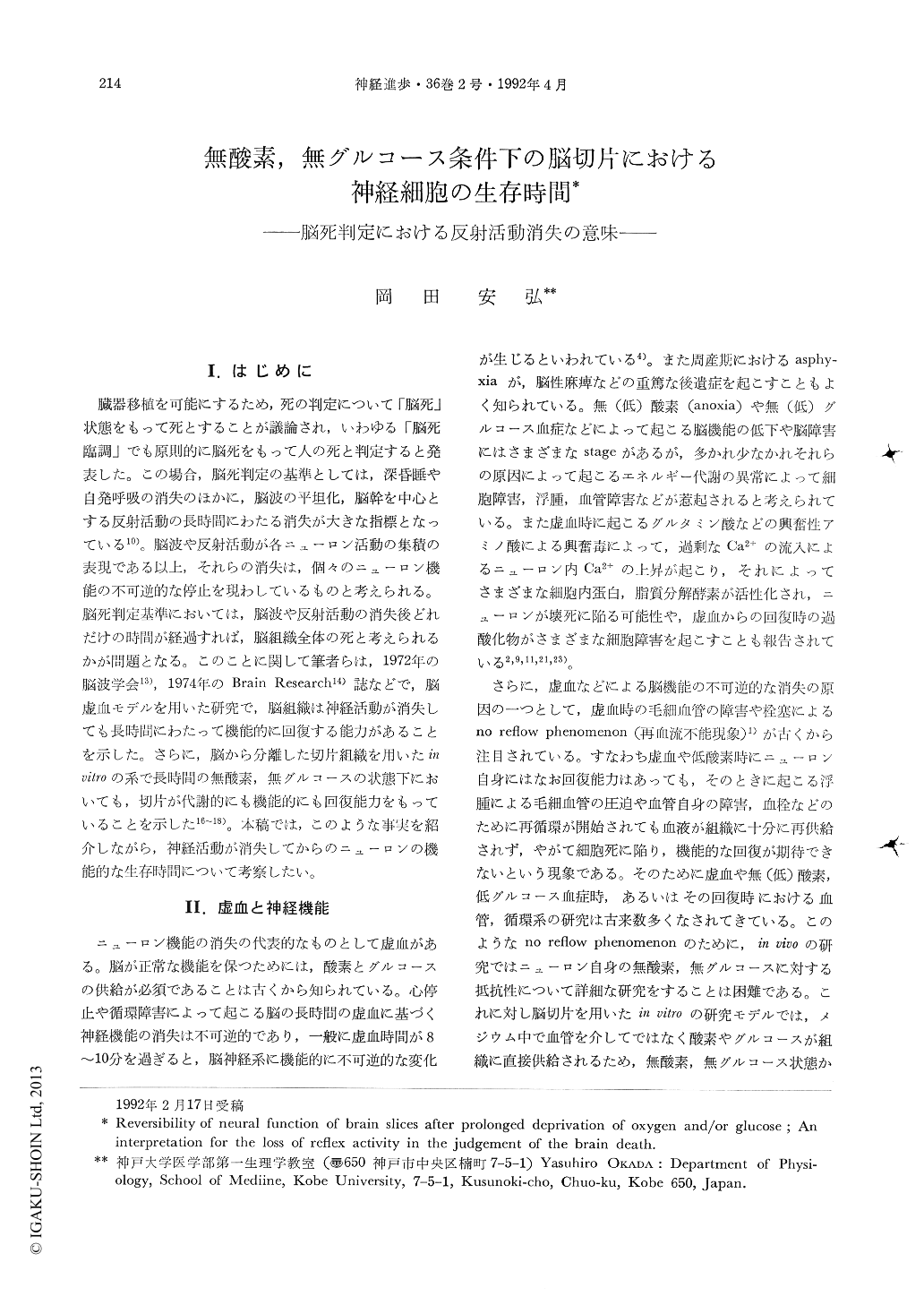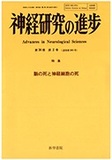Japanese
English
- 有料閲覧
- Abstract 文献概要
- 1ページ目 Look Inside
I.はじめに
臓器移植を可能にするため,死の判定について「脳死」状態をもって死とすることが議論され,いわゆる「脳死臨調」でも原則的に脳死をもって人の死と判定すると発表した。この場合,脳死判定の基準としては,深昏睡や自発呼吸の消失のほかに,脳波の平坦化,脳幹を中心とする反射活動の長時間にわたる消失が大きな指標となっている10)。脳波や反射活動が各ニューロン活動の集積の表現である以上,それらの消失は,個々のニューロン機能の不可逆的な停止を現わしているものと考えられる。脳死判定基準においては,脳波や反射活動の消失後どれだけの時間が経過すれば,脳組織全体の死と考えられるかが問題となる。このことに関して筆者らは,1972年の脳波学会13),1974年のBrain Research14)誌などで,脳虚血モデルを用いた研究で,脳組織は神経活動が消失しても長時間にわたって機能的に回復する能力があることを示した。さらに,脳から分離した切片組織を用いたin vitroの系で長時間の無酸素,無グルコースの状態下においても,切片が代謝的にも機能的にも回復能力をもっていることを示した16~18)。本稿では,このような事実を紹介しながら,神経活動が消失してからのニューロンの機能的な生存時間について考察したい。
Long-lasting loss of neural reflex activity especially in the brain stem is essential for the judgement of the brain death. To test the propriety of this concept, the reversibility of the neural function of hippocampal slices was studied after long-lasting deprivation of oxygen and/or glucose. For the index of the neural function, the postsynaptic potential was recorded in the pyramidal neurons of CA3 region of hippocampus after electrical stimulation to granule cell layer of centate gyrus. ATP and creatinephosphate in each slice were determined for monitering the energy metabolism of the slice.

Copyright © 1992, Igaku-Shoin Ltd. All rights reserved.


